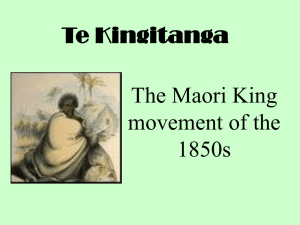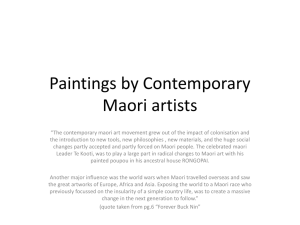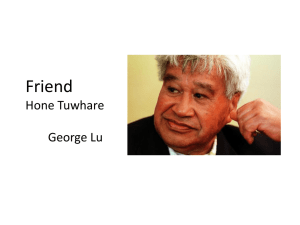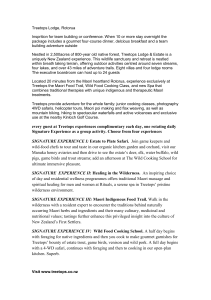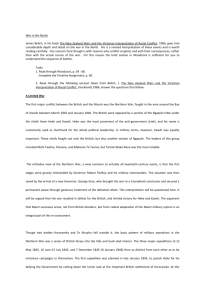Traditional skirt paper - The New School Portfolio
advertisement
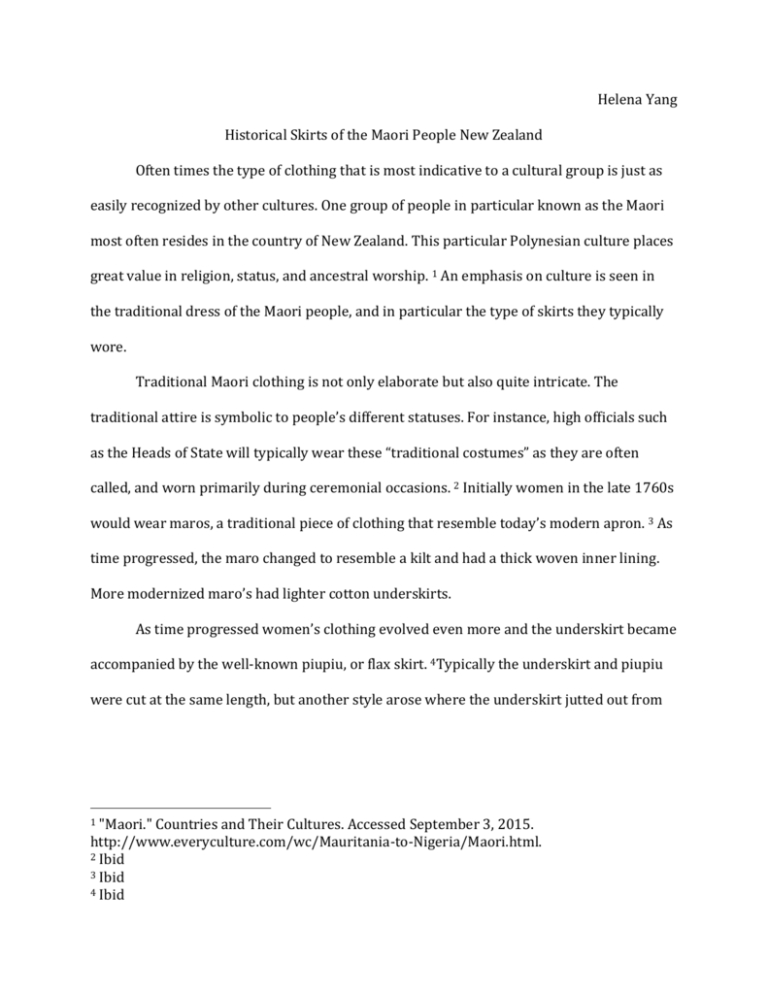
Helena Yang Historical Skirts of the Maori People New Zealand Often times the type of clothing that is most indicative to a cultural group is just as easily recognized by other cultures. One group of people in particular known as the Maori most often resides in the country of New Zealand. This particular Polynesian culture places great value in religion, status, and ancestral worship. 1 An emphasis on culture is seen in the traditional dress of the Maori people, and in particular the type of skirts they typically wore. Traditional Maori clothing is not only elaborate but also quite intricate. The traditional attire is symbolic to people’s different statuses. For instance, high officials such as the Heads of State will typically wear these “traditional costumes” as they are often called, and worn primarily during ceremonial occasions. 2 Initially women in the late 1760s would wear maros, a traditional piece of clothing that resemble today’s modern apron. 3 As time progressed, the maro changed to resemble a kilt and had a thick woven inner lining. More modernized maro’s had lighter cotton underskirts. As time progressed women’s clothing evolved even more and the underskirt became accompanied by the well-known piupiu, or flax skirt. 4Typically the underskirt and piupiu were cut at the same length, but another style arose where the underskirt jutted out from "Maori." Countries and Their Cultures. Accessed September 3, 2015. http://www.everyculture.com/wc/Mauritania-to-Nigeria/Maori.html. 2 Ibid 3 Ibid 4 Ibid 1 under the piupiu. This was a great way to display printed accents and woven designs, 5 which is popularly associated with Maori clothing. In other area’s of the world such as England, women wore full, long gowns. 6Similar to the Maori however, undergarments were becoming much more of interest to the public. Stockings were very popular along with the use of lace. 7 In comparison, Maori skirts were much less voluminous however both skirts were similar in length, hitting the feet and ankles. Using lace is also similar to the use of intricate weaving techniques on piupius; both offer an extra element of appeal. Mauri men also wear the traditional skirt. More modern piupius are shorter and generally hit around the thigh. A waistband with traditional taniko weaving or crossstitching is another accent that is added on to the piupius design. 8 The skill of weaving is a difficult and complex skill that is often passed down from generation to generation. 9This craft alone demonstrates how the traditional skirt embodies the values of Mauri cultureancestral worship and keeping tradition alive. Different Maori tribes and groups also utilized decorative designs as a way to express identity. 10Instead of using the traditional flax material, which is more expensive, more durable materials such as yard and plastic are now used. Flax created a special rustling sound when it was worn or danced in during special occasions, which is not justified by modern replications. 5 Ibid "Clothing 1735 - 1770." American Revolution. Accessed September 8, 2015. http://www.americanrevolution.org/clothing/clothing3.php. 7 Ibid 8 Shorten, Judy. Maori Costume and Taniko. Accessed September 3, 2015. http://www.vcn.bc.ca/~celtic3/tdress.htm. 9 "Dame Rangimarie Hetet." Academy Galleries. Accessed September 3, 2015. http://www.nzafa.com/web/dame-rangimarie-hetet. 10 Condra, Jill. Encyclopedia of National Dress Traditional Clothing around the World. Santa Barbara, Calif.: ABC-CLIO, 2013. 532. 6 It is evident that the dress of the Mauri people is symbolic to the culture and traditions of the region, although it is much more costume like today. 11 Maori clothing is seen as a way for the region to stay connected to their culture’s past traditions, family, and identity. Although the Maori skirt has evolved along the way to keep up with societal changes, it still represents the core values of the Maori. 11 Ibid
